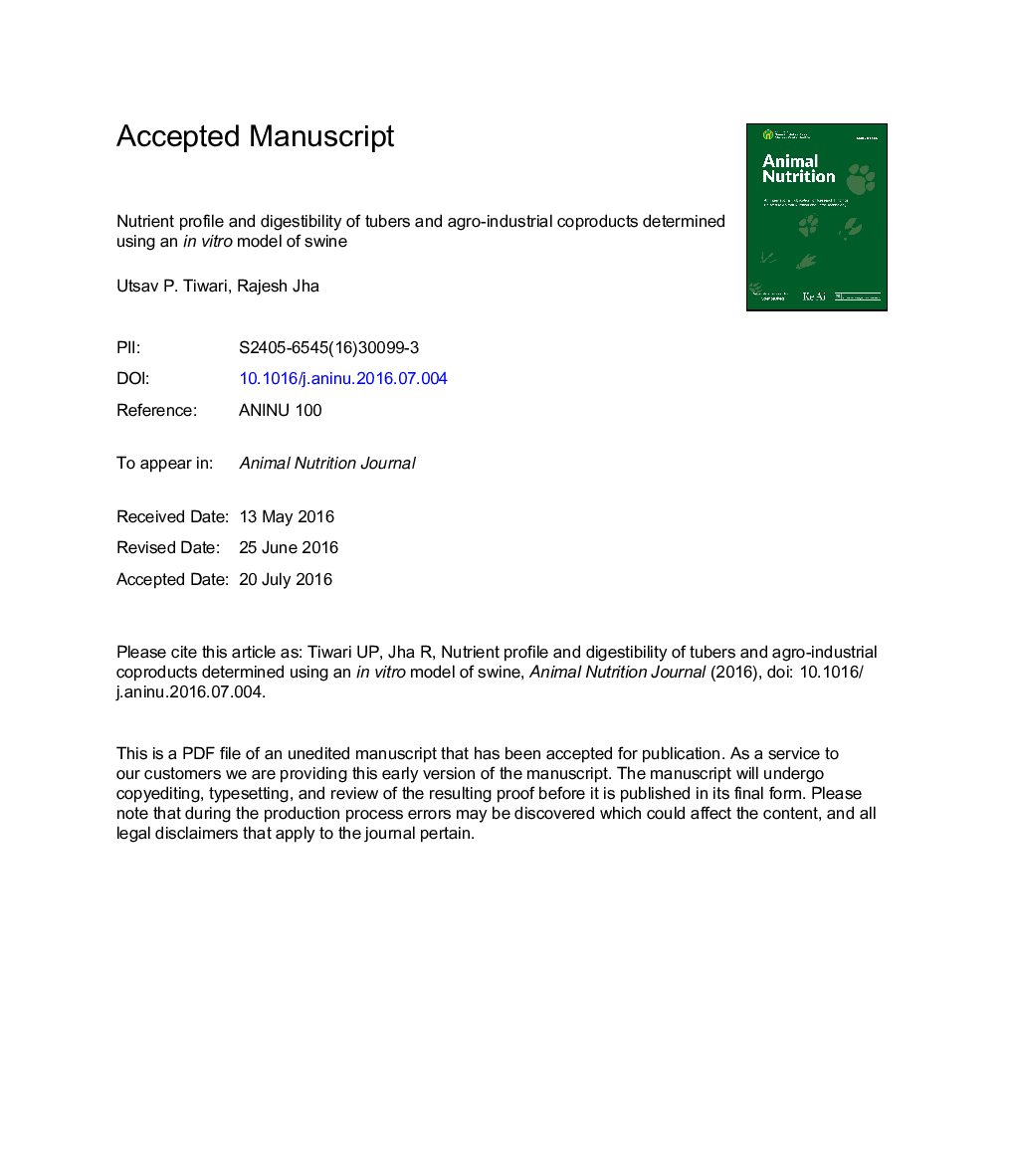| کد مقاله | کد نشریه | سال انتشار | مقاله انگلیسی | نسخه تمام متن |
|---|---|---|---|---|
| 8882669 | 1625238 | 2016 | 15 صفحه PDF | دانلود رایگان |
عنوان انگلیسی مقاله ISI
Nutrient profile and digestibility of tubers and agro-industrial coproducts determined using an in vitro model of swine
دانلود مقاله + سفارش ترجمه
دانلود مقاله ISI انگلیسی
رایگان برای ایرانیان
کلمات کلیدی
موضوعات مرتبط
علوم زیستی و بیوفناوری
علوم کشاورزی و بیولوژیک
علوم دامی و جانورشناسی
پیش نمایش صفحه اول مقاله

چکیده انگلیسی
Exploring and evaluating alternative feed ingredients to be used in swine diet is essential due to highly variable cost and limited availability of conventional feed ingredients. Tubers and agro-industrial coproducts could provide the basis for producing affordable swine feed. However, information on the nutritional value of these potential alternative feedstuffs is necessary while considering their use in swine feeding program. Four tubers (purple sweet potato [PSP], okinawan sweet potato, taro and cassava) and 3 coproducts (okara, wheat millrun [WMR] and barley brewers grain [BBG]) were analyzed for their proximate nutrients, starch, fibers and gross energy (GE) content. Two independent in vitro studies were carried out for tubers and coproducts to determine their nutrients digestibility using a 3-step enzymatic assay (which mimics the digestion occurring in the gastrointestinal tract of swine) with 9 replicates of each sample digested in 3 batches equally. All replicate samples were used to determine in vitro dry matter digestibility (IVDDM) while 2 replicates from each batch were used to determine in vitro GE digestibility (IVDGE). Among tubers, CP content was the highest in taro (8.8%) and the lowest in cassava (3.7%), while CP content among coproducts was the highest in okara (22.7%) and the lowest in WMR (11.8%). Ether extract content among tubers ranged from 1.1% to 2.8%. The GE content among tubers, ranged from 4,134 to 4,334 kcal/kg whereas among coproducts it ranged from 4,270 to 4,794 kcal/kg. Among tubers, IVDDM for PSP was significantly higher (86.8%, P < 0.001) than taro (70.3%). Among coproducts, IVDDM of okara (74.1%) was significantly higher (P < 0.05) than BBG (61.3%). In conclusion, both tubers and coproducts can be used as a partial substitute of conventional energy feedstuffs in swine diets as these are rich in GE and other nutrients and are fairly digestible.
ناشر
Database: Elsevier - ScienceDirect (ساینس دایرکت)
Journal: Animal Nutrition - Volume 2, Issue 4, December 2016, Pages 357-360
Journal: Animal Nutrition - Volume 2, Issue 4, December 2016, Pages 357-360
نویسندگان
Utsav P. Tiwari, Rajesh Jha,